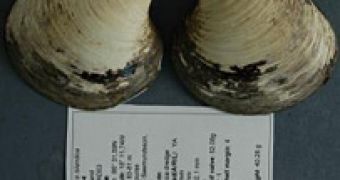When we talk about longevity, our minds think about giant tortoises and crocodiles, elephants and other animals.
Indeed, crocodiles can live as much as human beings and elephants do, also reaching the sixties. Giant tortoises are proved to live more than 200 years. And some ravens and parrots indeed live longer than other birds the same size (but reject that crap information about 100 years and so on!) do.
Baobabs are said to live till 3,000 years. Sequoia (redwoods), the largest trees in the world, are at the same time amongst the most long-lived. But the oldest still living individuals belong to two pine species from the mountains of southwestern USA: Great Basin Bristlecone Pine (Pinus longaeva) and Rocky Mountains Bristlecone Pine (Pinus arista). The oldest Pinus longaeva has 4,900 years! The Egyptian civilization was in its cradle when these pines were seedlings!
When thinking about animals, elephants can live up to 60 years, crocodiles over 80 and recent information says that large whales can outlive 150 years old. Large tortoises have been found to round about two centuries. A radiated tortoise (Geochelone radiata) from Madagascar died at the age of 188.
But now forget all these: a clam recovered off the Iceland coast seems to be the longest-lived animal ever found: it is an ocean quahog clam aged 405 to 410. The animal's age was assessed by counting its shell rings, as the clam adds a new one each year. Guinness Book of Records states that the longest-lived animal was also a clam discovered in 1982 and aged 220. Unofficially, another clam located in an Icelandic museum was spotted to be 374-years-old, being 31 years younger than the newly found one.
The new "grandmother" of all animals was dubbed Ming after the dynasty ruling in China when it was just a larva, during the times of Queen Elizabeth I and the foundation of the first English colonies in America.
"The growth-increments themselves provide a record of how the animal has varied in its growth-rate from year to year, and that varies according to climate, sea-water temperature and food supply. And so by looking at these mollusks we can reconstruct the environment the animals grew in. They are like tiny tape-recorders, in effect, sitting on the sea-bed and integrating signals about water temperature and food over time." Professor Chris Richardson, from Bangor University's School of Ocean Sciences, Wales, told the BBC.
"The clam's discovery could help shed light on how some animals can live to extraordinary ages. What's intriguing the Bangor group is how these animals have actually managed, in effect, to escape senescence [growing old]. One of the reasons we think is that the animals have got some difference in cell turnover rates that we would associate with much shorter-lived animals.", added Richardson.

 14 DAY TRIAL //
14 DAY TRIAL //